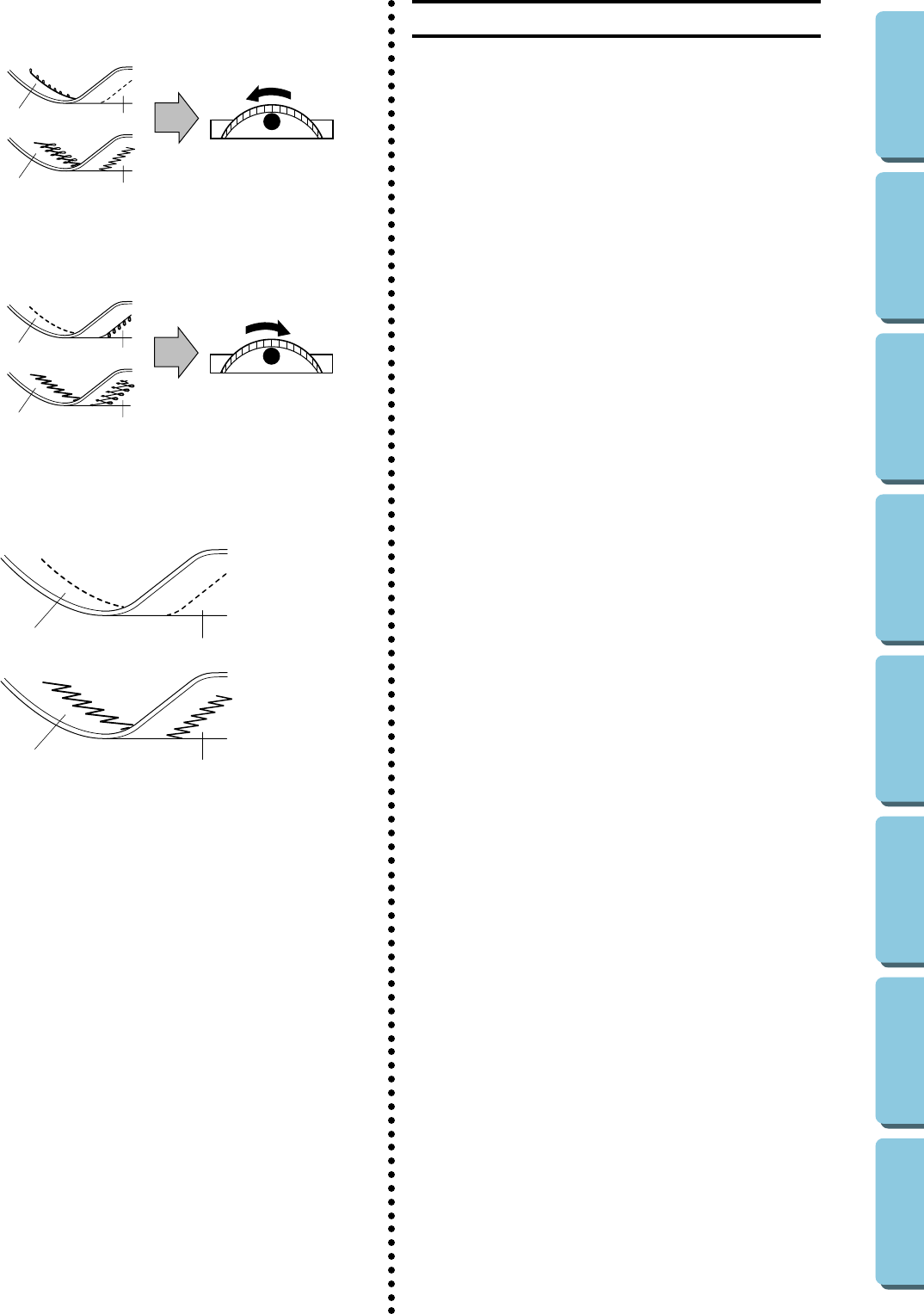
32
CONTENTS
KNOWING YOUR
SEWING MACHINE
STRAIGHT AND
ZIGZAG STITCHING
BUILT-IN STITCHES
BUTTONHOLE AND
BUTTON SEWING
USING ATTACHMENTS
AND APPLICATIONS
MAINTENANCE
INDEX
Thread Tension
Thread tension will affect the quality of your stitches. It may need to be
adjusted when you change fabric or thread type.
NOTE:
It is recommended that a test sample be made on a fabric scrap before
sewing on your project.
The basic thread tension setting is “5”.
Possible Problems and How To Correct Them
A Upper tension is too tight.
Locks appear on the surface of the fabric.
A-1 Upper tension control dial
Decrease the tension by turning the dial to a lower number.
B Upper tension is too loose.
Locks appear on the reverse side of the fabric.
B-1 Upper tension control dial
Increase the tension by turning the dial to a higher number.
1 Reverse
2 Surface
NOTE:
The lower thread tension has already been adjusted at the factory for
general use. For most sewing applications, no adjustment is needed.
When sewing with thin thread on thin fabrics, the thread tension can-
not be adjusted adequately with the upper tension control dial. There-
fore, the thread tension must be adjusted according to the procedure
described below.
C Lower tension is too loose.
Locks appear on the surface of the fabric.
Decrease the thread tension by turning the dial to a lower number.
If the result is still not satisfactory, then adjust the bobbin thread
tension as explained in C-1.
C-1 Bobbin
Increase the tension in the bobbin by turning the screw with a
small screwdriver in a clockwise direction. However, do not turn
the screw more than one full turn.
Remember to return the screw to its original setting before start-
ing your next project.
D Correct tension
Correct tension is important since too much or too little tension
will weaken your seams or cause puckers in your fabric.
1 Reverse
2 Surface
A-1A
2
1
2
1
B-1B
C
2
1
2
1
2
1
2
1
6
4
5
6
4
5


















